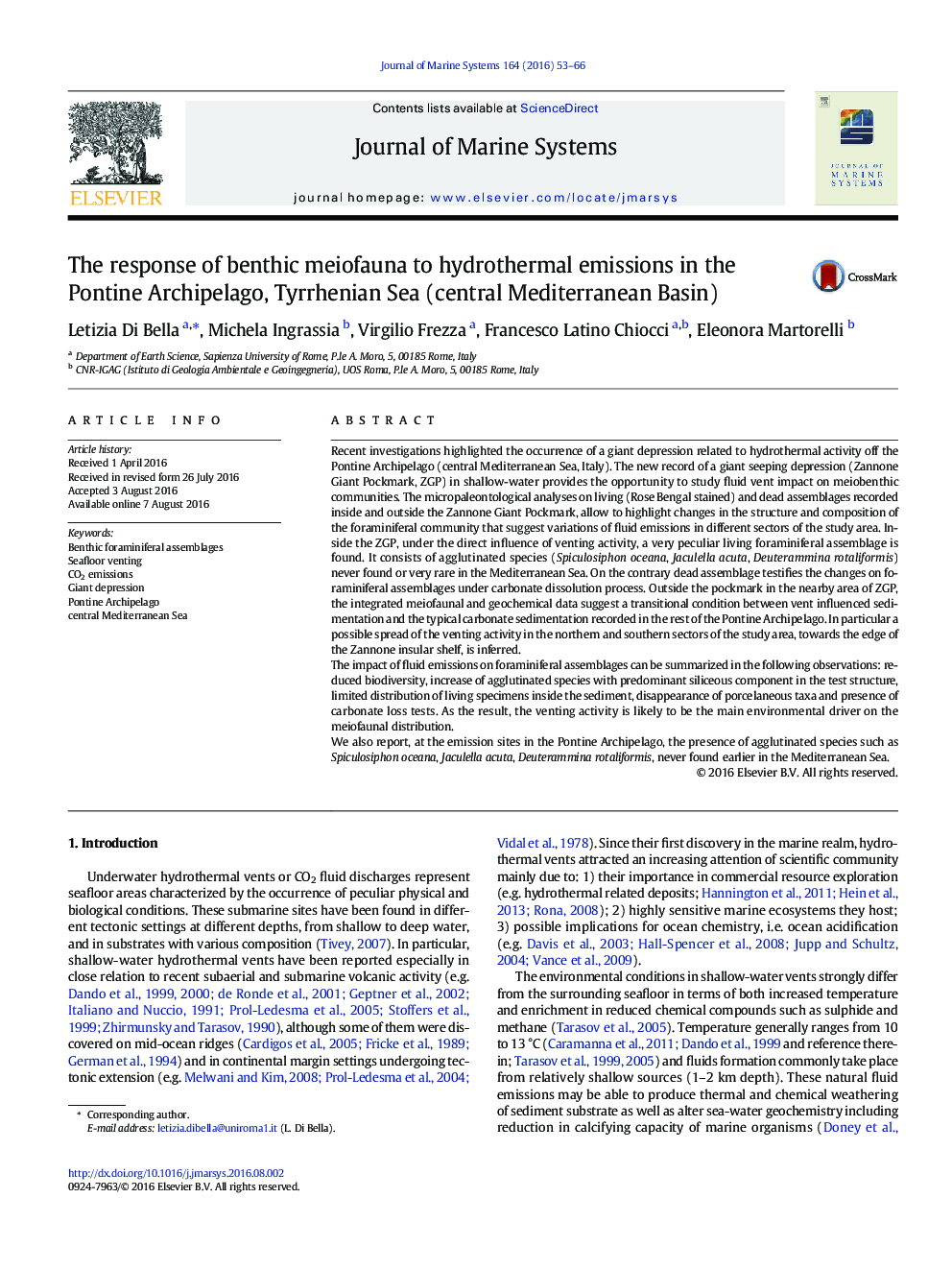| Article ID | Journal | Published Year | Pages | File Type |
|---|---|---|---|---|
| 4547842 | Journal of Marine Systems | 2016 | 14 Pages |
•The study records the response of foraminifera to hydrothermal vent activity.•An unusual for Mediterranean agglutinated assemblage is recorded.•Decreased biodiversity suggests increasing vent activity.•Meiofauna are useful proxies of hydrothermal vent environments.
Recent investigations highlighted the occurrence of a giant depression related to hydrothermal activity off the Pontine Archipelago (central Mediterranean Sea, Italy). The new record of a giant seeping depression (Zannone Giant Pockmark, ZGP) in shallow-water provides the opportunity to study fluid vent impact on meiobenthic communities. The micropaleontological analyses on living (Rose Bengal stained) and dead assemblages recorded inside and outside the Zannone Giant Pockmark, allow to highlight changes in the structure and composition of the foraminiferal community that suggest variations of fluid emissions in different sectors of the study area. Inside the ZGP, under the direct influence of venting activity, a very peculiar living foraminiferal assemblage is found. It consists of agglutinated species (Spiculosiphon oceana, Jaculella acuta, Deuterammina rotaliformis) never found or very rare in the Mediterranean Sea. On the contrary dead assemblage testifies the changes on foraminiferal assemblages under carbonate dissolution process. Outside the pockmark in the nearby area of ZGP, the integrated meiofaunal and geochemical data suggest a transitional condition between vent influenced sedimentation and the typical carbonate sedimentation recorded in the rest of the Pontine Archipelago. In particular a possible spread of the venting activity in the northern and southern sectors of the study area, towards the edge of the Zannone insular shelf, is inferred.The impact of fluid emissions on foraminiferal assemblages can be summarized in the following observations: reduced biodiversity, increase of agglutinated species with predominant siliceous component in the test structure, limited distribution of living specimens inside the sediment, disappearance of porcelaneous taxa and presence of carbonate loss tests. As the result, the venting activity is likely to be the main environmental driver on the meiofaunal distribution.We also report, at the emission sites in the Pontine Archipelago, the presence of agglutinated species such as Spiculosiphon oceana, Jaculella acuta, Deuterammina rotaliformis, never found earlier in the Mediterranean Sea.
